All issues

Predecessor
Volume 45, Issue 4
Displaying 1-4 of 4 articles from this issue
- |<
- <
- 1
- >
- >|
Short Note
-
Satoshi TERAI, Hidekazu MIYAMOTO, Atsuko NABESHIMA2008Volume 45Issue 4 Pages 236-241
Published: April 18, 2008
Released on J-STAGE: April 30, 2008
JOURNAL FREE ACCESSTo assess the factors affecting home return after convalescent rehabilitation, we retrospectively compared such items between the patients returning home (subgroup I) and those requiring long-term institutionalization (subgroup II) as follows : the patient's ADL level before admission and the their living environment, the serial changes in their ADL after admission, the duration of acute care, and the length of stay. Subjects comprised 32 patients with cerebrovascular disorder (CVD) and 22 with disuse syndrome (DS) and each of these two groups was divided into subgroup I and II (n=19 and 13 in the CVD group, 11 and 11 in the DS group, respectively). In the CVD group, the mean age of subgroup I was significantly lower than that of subgroup II (65.4±14.0 and 80.3±10.9, respectively). The FIM scores (total, motor, cognition) in subgroup I were significantly higher than those in subgroup II, both at the time of admission and discharge. In the FIM motor items, the scores for mobility and locomotion significantly improved at discharge. In the DS group, there was no difference in the ages between the subgroups (80.5±11.0 and 81.5±11.2, respectively). Subgroup I had more family members and showed a significant increase in their scores for self-care and mobility after admission. In conclusion, home return appears most related to improvement in motor ADL, and this improvement was further influenced by age and cognitive function in the CVD group and by the number of family members in the DS group.View full abstractDownload PDF (673K)
Case Report
-
Anri GOTO, Nobuyuki SASAKI, Hidekazu SUGAWARA, Wataru KAKUDA, Masahiro ...2008Volume 45Issue 4 Pages 242-247
Published: April 18, 2008
Released on J-STAGE: April 30, 2008
JOURNAL FREE ACCESSWe report a 47-year-old right-handed male patient with pure word deafness after suffering an intracerebral hemorrhage. He had been working as a high school teacher before the onset of his stroke. He was emergently admitted to our hospital due to left putaminal hemorrhage and treated conservatively after admission. The patient's neurological findings showed that although his auditory comprehension was severely impaired, he was still able to communicate using written language. Pure-tone audiometry didn't detect any sensorineural hearing impairment. After the diagnosis of pure word deafness was clinically made, we educated the patient and his family, as well as the associated medical staff at our department, about this condition so that they could understand his pathological situation. In addition, we introduced a rehabilitation program for lip-reading and showed him a technique for using articulatory voice production in usual conversation. As a result of our attempts, he developed the ability to communicate using lip-reading skills after 2 months of rehabilitation and successfully returned to his previous work because of the communicative competence he acquired. We also make some proposals for helping other patients with auditory agnosia to return not only to their regular daily activities but also to return to gainful employment, as patients with this condition seem to have special difficulties benefiting from the present welfare service system in Japan.View full abstractDownload PDF (909K)
Editorial
-
Fumio ETO2008Volume 45Issue 4 Pages 217
Published: April 18, 2008
Released on J-STAGE: October 02, 2009
JOURNAL FREE ACCESSDownload PDF (199K)
44th Annual Meeting of the Japanese Association of Rehabilitation Medicine
Panel Discussion
Panel Discussion
-
2008Volume 45Issue 4 Pages 218-235
Published: April 18, 2008
Released on J-STAGE: October 02, 2009
JOURNAL FREE ACCESS
Clinical Characteristics of Central Cord Syndrome in Early Stage and Outcome of Medical Rehabilitation…Toshikatsu TOMINAGA, Yoko KUROKAWA, Mikio SUMIDA, Akihiro TOKUHIRO, Kazunari FURUSAWA, Eiichi GENDA 218
Bladder Dysfunction and Management of Neurogenic Bladder in Traumatic Central Cord Syndrome…Masazumi NAGASHIMA, Katsuyuki TANAKA 223
Rehabilitation of Central Cord Syndrome : Recovery of Motor Function…Takamitsu TOKIOKA 225
Traumatic Central Cord Syndrome : Functional Outcomes and Health-related QOL…Osamu YOKOYAMA 230View full abstractDownload PDF (1951K)
- |<
- <
- 1
- >
- >|